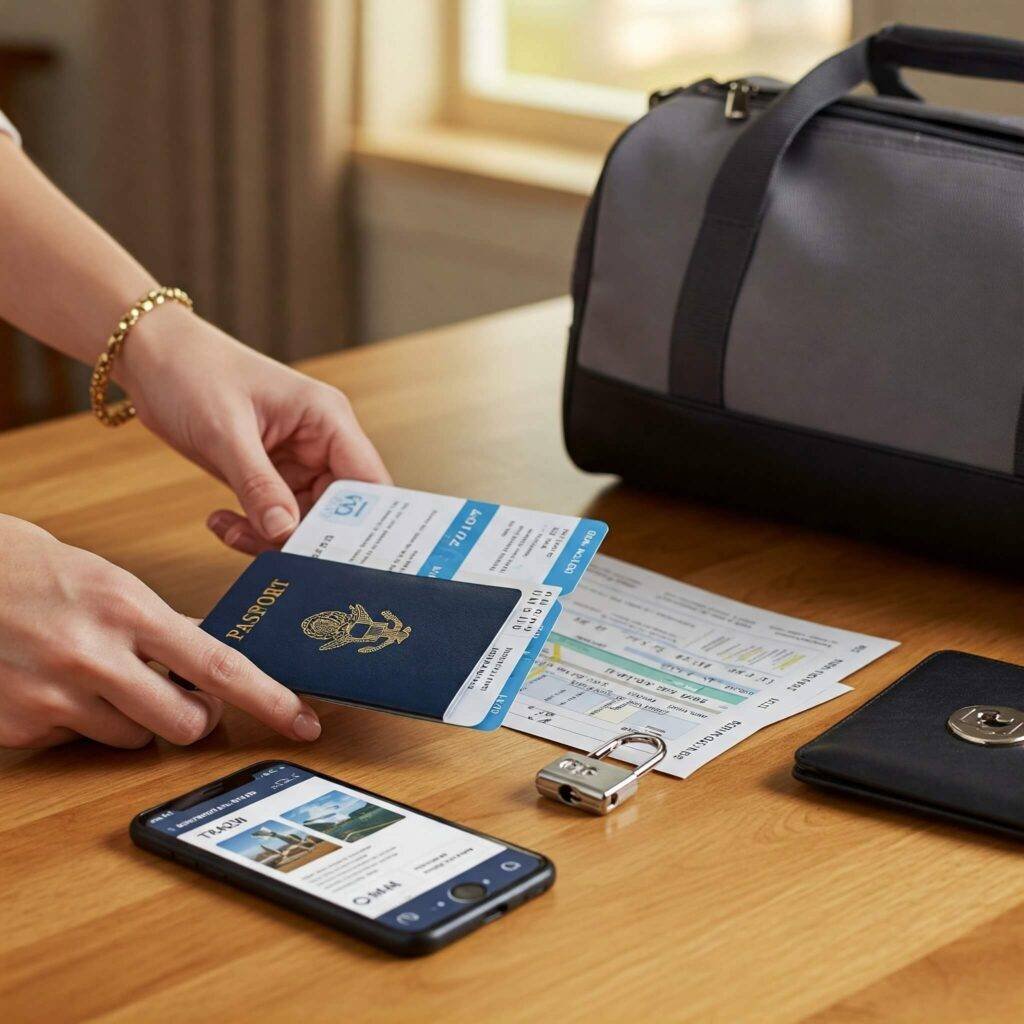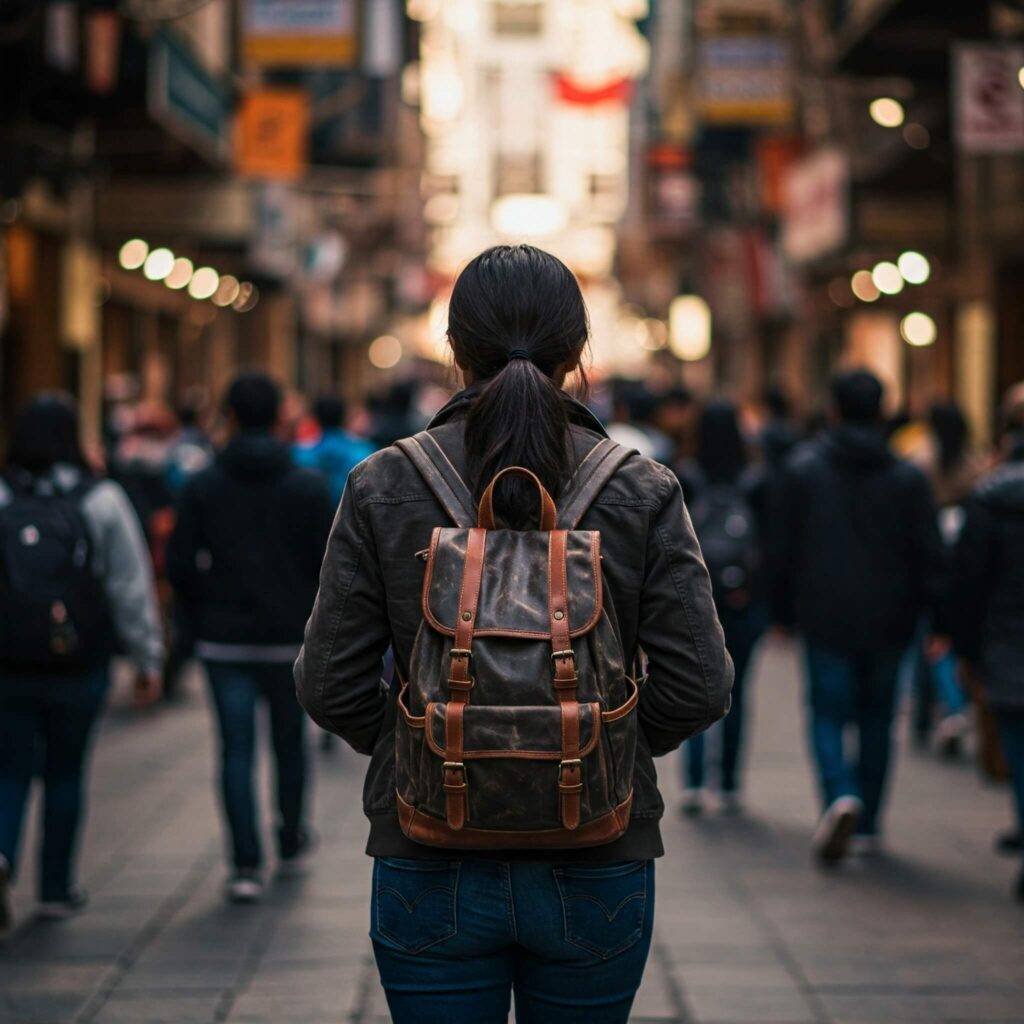Ah, travel! The thrill of exploring new places, meeting different cultures, and creating unforgettable memories. It’s a passion that fuels millions. But amidst the excitement of planning your next adventure, there’s one crucial topic that often gets overlooked until it’s too late: Travel Safety 101.
Understanding the fundamentals of Travel Safety 101 isn’t about being paranoid; it’s about being prepared. It’s about minimizing risks so you can fully immerse yourself in the joy of your journey without unnecessary stress or unfortunate incidents. And that includes keeping you safe and ensuring your valuable gear stays secure from departure to return.
Having navigated countless destinations myself, I’ve learned that smart preparation and awareness are your best friends on the road. This guide will walk you through actionable steps to enhance your personal security and protect your belongings, ensuring your focus remains on the incredible experiences ahead.
Planning for Travel Safety: The Foundation of a Secure Trip
Security starts long before you even pack your bags. Thorough planning is a cornerstone of Travel Safety 101.
Researching Your Destination Safely
Every place has its nuances. What’s considered safe behavior in one country might attract unwanted attention in another.
- Understand Local Customs: Knowing local etiquette, dress codes, and social norms can help you blend in and avoid inadvertently offending someone or drawing attention.
- Check Travel Advisories: Government websites (like the US Department of State, UK Foreign Office, etc.) provide up-to-date information on safety and security risks, health warnings, and entry requirements. This is essential reading. [Outbound Link Placeholder: Insert link to a relevant government travel advisory site, e.g., U.S. Department of State Travel Advisories]
- Read Recent News: Look for news reports about the specific areas you plan to visit. Are there current issues like civil unrest, high crime rates, or specific types of scams targeting tourists?
Securing Your Documents & Valuables Before You Go
This is a critical step in Travel Safety 101 for protecting both your identity and your gear.
- Copy Everything: Make both physical and digital copies of your passport, visa, driver’s license, credit cards, insurance details, and important contact numbers. Store digital copies securely (e.g., encrypted cloud storage) and keep physical copies separate from the originals.
- Inform Your Bank: Let your bank and credit card companies know your travel dates and destinations to prevent them from freezing your cards due to suspected fraudulent activity.
- Organize Essential Contacts: Have a list of emergency contacts, including your embassy/consulate, local emergency services number (it’s not always 911!), and your travel insurance provider’s contact information.

Staying Safe On the Go: Practical Travel Safety Tips
Now you’re on your journey! Maintaining awareness and implementing smart practices are key components of Travel Safety 101 while actively traveling.
Personal Awareness & Avoiding Risky Situations
Your intuition is a powerful tool. Listen to it.
- Be Mindful of Your Surroundings: Avoid looking constantly at your phone or appearing distracted, especially in crowded areas. Pay attention to who is around you.
- Dress Appropriately: Try to avoid flashy jewelry or clothing that screams “wealthy tourist.” Blend in as much as possible.
- Limit Alcohol Consumption: Being intoxicated makes you a much more vulnerable target.
- Avoid Walking Alone at Night: Especially in unfamiliar or poorly lit areas. Use reputable taxis or ride-sharing services.
- Saying “No” is Okay: Don’t feel pressured to engage with persistent touts, vendors, or strangers who make you feel uncomfortable. Politely but firmly decline and walk away.
Protecting Your Gear in Transit
Whether on a plane, train, or bus, keeping your gear secure is part of effective Travel Safety 101.
- Keep Valuables on Your Person: Never check valuable electronics, important documents, medication, or expensive jewelry in checked luggage. Carry them in your carry-on.
- Use TSA-Approved Locks: While not foolproof, they can deter opportunistic theft from checked bags. For carry-ons, consider small locks on zippers.
- Keep Bags Within Sight: Don’t leave your bag unattended, even for a moment, in airports, stations, or cafes. When sleeping on transport, secure your bag to yourself or the seat.
Accommodation Safety Tips
Your hotel, hostel, or rental should be a safe haven. Here’s how to maximize security as per Travel Safety 101.
- Choose Reputable Accommodation: Read reviews focusing on safety and security.
- Keep Your Door Locked: Use deadbolts and security chains when you are inside your room. Don’t prop doors open.
- Don’t Announce Your Room Number: Be discreet when checking in.
- Meet Visitors in the Lobby: Avoid letting unknown individuals into your room.
- Secure Valuables: Utilize the room safe for passports, extra cash, and small electronics when you leave the room.
Staying Secure Online While Traveling
In today’s world, digital security is interwoven with Travel Safety 101.
- Be Wary of Public Wi-Fi: Avoid accessing sensitive accounts (banking, email) on unsecured public networks. Use a Virtual Private Network (VPN) for a secure connection. [Outbound Link Placeholder: Insert link to a reputable source explaining VPNs for travel or suggesting VPN services]
- Use Strong Passwords: Ensure your device passcodes and online account passwords are robust.
- Disable Auto-Connect: Prevent your phone from automatically connecting to available Wi-Fi networks.
- Be Skeptical of Emails/Messages: Phishing attempts are common. Don’t click suspicious links or provide personal information via unsolicited messages.
Keeping Your Gear Secure Throughout Your Journey
Beyond just during transit, proactive measures are needed as part of Travel Safety 101 to protect your belongings from theft or damage.
Smart Packing for Gear Safety
How you pack can significantly impact the security of your gear.
- Use the Right Bag: Consider anti-theft bags with features like slash-resistant material, lockable zippers, and hidden pockets.
- Distribute Valuables: Don’t keep all your cash, cards, and important documents in one place. Use a money belt, neck pouch, or hidden pockets in clothing.
- Photograph Your Gear: Before you leave, take pictures of your electronics, luggage, and any other valuable items. This can be helpful for insurance claims if something goes missing.
Using Anti-Theft Devices & Practices
Simple tools and habits enhance Travel Safety 101 for your gear.
- Cable Locks: Useful for securing bags to immovable objects (like a bed frame in a hostel or a luggage rack on a train).
- Personal Alarms: Small, loud alarms can be a deterrent in a threatening situation.
- Don’t Flash Valuables: Avoid openly displaying expensive cameras, phones, or large amounts of cash in public.
- Be Aware of Pickpocketing Hotspots: Crowded tourist areas, public transport, and markets are common targets. Keep bags secure and close to your body.

Protecting Your Electronics & Data
Our gadgets are often our most valuable and information-rich gear. Their safety is crucial for Travel Safety 101.
- Enable Tracking/Wipe Features: Set up “Find My Device” or similar features on your phone, laptop, and tablet. Know how to remotely wipe data if necessary.
- Back Up Data: Regularly back up photos, documents, and other important data to cloud storage or an external hard drive before and during your trip.
- Use Screen Protectors & Cases: Physical protection is just as important as digital.
- Be Cautious with Charging Ports: Some public USB charging stations can be compromised (“juice jacking”). Use your own adapter and a power outlet.
Handling Unexpected Situations Safely
Even with the best preparation under Travel Safety 101, things can happen. Knowing how to react is vital.
What to Do in Case of Theft or Loss
- Report It Immediately: Contact local police to file a report. You’ll likely need this for insurance claims.
- Contact Your Bank/Credit Card Companies: If cards are stolen, report them lost or stolen immediately to cancel them.
- Contact Your Embassy/Consulate: If your passport is lost or stolen, contact your country’s embassy or consulate for assistance.
- Notify Your Travel Insurance: Start the claims process as soon as possible. Having those photos of your gear will be helpful!
Staying Healthy and Avoiding Illness
Health is a critical, though often overlooked, aspect of Travel Safety 101.
- Consult Your Doctor: Get necessary vaccinations or preventative medications well before you travel.
- Travel Insurance is Non-Negotiable: Ensure your policy covers medical emergencies, evacuation, and trip interruption. [Outbound Link Placeholder: Insert link to a reputable source explaining travel insurance or suggesting providers]
- Be Mindful of Food and Water: Research common health risks in your destination and take precautions with what you eat and drink.
- Carry a Basic First-Aid Kit: Include essentials like bandages, antiseptic wipes, pain relievers, and any personal medications.
Travel should be an enriching and enjoyable experience. By integrating these principles of Travel Safety 101 into your planning and journey, you significantly reduce the chances of encountering problems with your personal safety or the security of your valuable gear.
Stay aware, trust your instincts, take smart precautions, and most importantly, relax and enjoy the incredible world out there!


